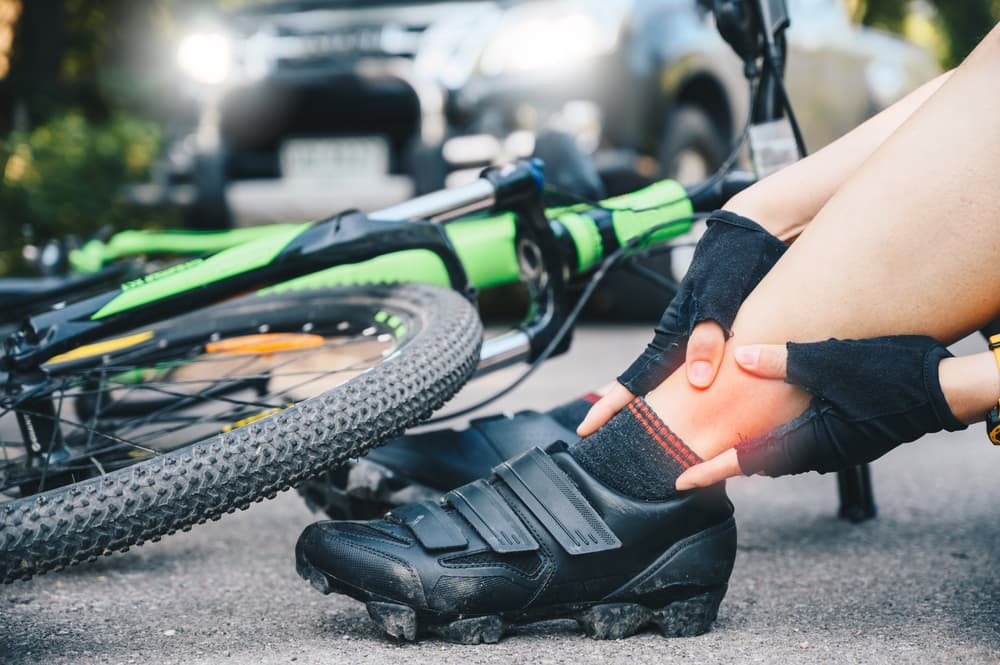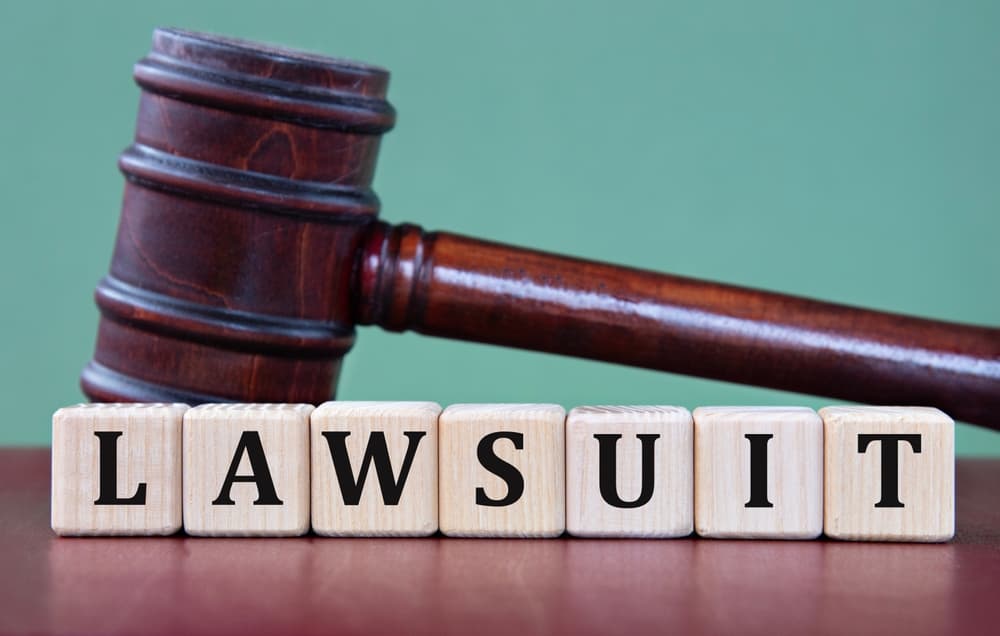
Determining fault when a bicycle collides with a car involves complex legal analysis that goes beyond the simple question of who struck whom. While it might seem obvious that the person doing the hitting bears responsibility, bicycle-car accidents require careful examination of traffic laws, road conditions, and the actions of both parties leading up to the crash.
The aftermath of a bicycle-car collision can be overwhelming, especially when dealing with injuries while trying to navigate insurance claims and legal procedures. These cases often involve disputed liability, with each party’s insurance company working to minimize their client’s responsibility.
Cyclists have the same rights and responsibilities as other vehicle operators but are also more vulnerable to serious injury. This combination creates complex legal scenarios where fault determination can significantly impact the compensation available to injured parties. Working with an experienced bicycle accident lawyer ensures that your rights are protected and that fault is properly established based on the facts of your case.
Understanding Legal Rights and Responsibilities
Bicycles are considered vehicles under most traffic laws, which means cyclists have the same rights to use roadways as motor vehicles. This legal status gives cyclists the right to occupy travel lanes, make turns, and expect other drivers to follow traffic laws around them. However, this equal status also means that cyclists must follow the same traffic rules, including stopping at red lights, yielding right-of-way when required, and signaling turns.
The concept of equal rights doesn’t mean equal treatment when accidents occur. Car drivers have a heightened duty of care when operating around more vulnerable road users like cyclists. It means that even when a bicycle technically strikes a car, the driver may still bear legal responsibility if their actions created the dangerous situation that led to the collision.
Vehicle operators must maintain proper awareness of their surroundings and adjust their driving behavior based on road conditions and the presence of other users. When cyclists are present, this duty includes checking blind spots more carefully, maintaining safe following distances, and being prepared for the different movement patterns that bicycles exhibit compared to motor vehicles.
The legal framework surrounding bicycle-car accidents recognizes that the consequences of these collisions are rarely equal. While a car might suffer minor damage from being struck by a bicycle, the cyclist often faces severe injuries or death. This disparity in outcomes influences how courts and insurance companies evaluate fault and damages in these cases.
Common Scenarios Where Bicycles Strike Cars
Rear-end collisions between bicycles and cars often occur when vehicles stop suddenly or make unexpected maneuvers. The fault may lie with the driver who created the dangerous situation, such as stopping in a bike lane or making an abrupt lane change without signaling.
Intersection accidents are another common scenario where bicycles hit cars during turning movements. Determining fault depends on who had the right-of-way and whether both parties followed traffic laws. It’s not about who struck whom but rather who acted negligently.
Lane-changing incidents require careful analysis of traffic patterns and the actions of both parties. A bicycle striking a car doesn’t automatically make the cyclist at fault if the driver violates traffic laws or fails to check properly before changing lanes.
Parking-related accidents, like “dooring,” typically involve a parked car opening its door into a cyclist’s path. However, fault determination depends on factors like whether the parking action was legal and whether proper checks were made before opening doors.
The Role of Traffic Laws in Fault Determination
Traffic law violations are key in establishing fault when bicycles strike cars. Courts and insurance companies examine whether either party broke specific traffic rules leading up to the collision, such as failure to yield, improper lane changes, or disobeying traffic signals.
Violating traffic laws creates a presumption of fault, but this can be overcome with evidence showing the other party’s actions were the primary cause of the accident. The burden of proof then falls on the non-violating party to demonstrate their innocence.
Speed regulations are crucial in determining fault, particularly when excessive speed contributed to the collision. Cyclists and drivers can be found at fault for speed-related violations, with factors like road conditions and posted speed limits considered.
Right-of-way laws are also critical, as they establish who had the legal right to occupy specific road space. Understanding these laws requires knowledge of local traffic regulations and how they apply to different road users.
Evidence Collection and Fault Investigation
Physical evidence from the accident scene is key for determining fault in bicycle-car collisions. Damage patterns, debris fields, skid marks, and final vehicle positions provide valuable information. Attorneys work with accident reconstruction experts to interpret this evidence and build strong cases.
Witness statements can be particularly valuable, as independent witnesses can provide objective accounts of the events leading up to the collision. These statements can help establish which party violated traffic laws or acted negligently.
Video evidence from traffic cameras, security systems, or smartphones can provide definitive proof of fault. This footage shows the actual movements of both parties and can reveal traffic law violations. Attorneys know how to obtain and preserve this evidence before it’s lost.
The damage patterns on the bicycle and car can reveal important details about the impact, such as angle, speed, and whether either party attempted to avoid the collision. Expert analysis is often required to interpret this technical evidence properly.
Insurance Company Tactics and Challenges
Insurance companies may argue that cyclists are at fault because their bike struck a car. However, the fault is determined by traffic law violations and negligence, not who struck whom. Bicycle accident attorneys know how to counter these tactics and establish actual liability.
Cyclists’ perceived vulnerability can be used against them in insurance negotiations, with adjusters blaming the victim for not preventing someone else’s negligence. This argument is not a valid legal defense. Attorneys understand how to address these tactics.
Insurance companies might use a lack of safety gear as evidence of fault, but this doesn’t automatically make a cyclist liable for a driver’s negligence. Bicycle accident lawyers know how to address these arguments and focus on the actual circumstances of the accident.
Medical Considerations and Injury Patterns
Bicycle-car collisions typically result in severe injuries to the cyclist, even when the bicycle is technically the striking vehicle. The physics of these accidents mean that the cyclist absorbs most of the impact energy, leading to serious injuries that require immediate medical attention and often long-term treatment.
Head injuries are common in bicycle-car accidents, even when the cyclist is wearing a helmet. The forces involved in these collisions can cause traumatic brain injuries that may not be immediately apparent but can have long-lasting effects on cognitive function, memory, and quality of life. Prompt medical evaluation is important for identifying and treating these injuries.
Orthopedic injuries from bicycle-car accidents often involve multiple fractures, particularly in the arms, legs, and pelvis. These injuries typically require surgical intervention and extensive rehabilitation, leading to significant medical expenses and time away from work. The severity of these injuries underscores why fault determination is necessary for ensuring adequate compensation.
Soft tissue injuries and road rash may seem minor compared to fractures and head injuries, but they can cause permanent scarring and ongoing pain. These injuries often require specialized treatment and may result in lasting disfigurement that affects the victim’s quality of life and earning capacity.
The Investigation Process
Professional accident reconstruction plays an important role in determining fault when bicycles strike cars. These experts analyze physical evidence, witness statements, and traffic patterns to create detailed analyses of how the accident occurred. Their findings can definitively establish which party violated traffic laws or acted negligently.
Police reports provide initial documentation of bicycle-car accidents but may not contain all the information needed to determine fault properly. Officers responding to these scenes may not have specialized training in bicycle accident investigation, leading to incomplete or inaccurate initial fault determinations. Bicycle accident attorneys know how to supplement police reports with additional investigation.
Traffic engineering analysis can reveal whether road design or traffic control devices contributed to the accident. Poorly designed intersections, inadequate signage, or missing bike lanes can create dangerous conditions that increase the likelihood of bicycle-car collisions. This analysis may identify additional parties who bear responsibility for the accident.
Expert witness testimony helps explain complex technical issues to judges and juries who may not understand the dynamics of bicycle-car accidents. These experts can clarify traffic law requirements, explain accident reconstruction findings, and demonstrate how specific actions led to the collision.
Legal Strategies for Establishing Fault
Bicycle accident attorneys employ various strategies to establish fault when bicycles strike cars. These strategies focus on demonstrating that the car driver’s actions violated traffic laws or created dangerous conditions that led to the collision, regardless of which vehicle struck the other.
The duty of care analysis examines whether the car driver met their legal obligation to operate safely around more vulnerable road users. This analysis considers factors like following distances, awareness of surroundings, and whether the driver took appropriate precautions when cyclists were present.
Traffic law violation documentation involves gathering evidence of specific violations committed by either party leading up to the accident. This documentation can include witness statements, video evidence, and expert analysis of the accident scene to identify which traffic laws were violated.
Causation arguments demonstrate the connection between the car driver’s actions and the collision. Even when a bicycle strikes a car, the driver may bear fault if their negligent actions created the dangerous situation that made the collision inevitable.
Damage Assessment and Compensation
Property damage in bicycle-car accidents typically involves damage to the bicycle and potentially minor damage to the car. While bicycle replacement costs may seem minimal compared to car repairs, high-end bicycles can be expensive to replace, and a bicycle’s sentimental value may exceed its monetary worth.
Medical expenses often represent the largest component of damages in bicycle-car accidents. The severity of injuries typically sustained by cyclists means that medical costs can reach substantial amounts, especially when long-term treatment or rehabilitation is required. Bicycle accident attorneys ensure that all medical expenses are properly documented and included in damage calculations.
Lost income calculations must account for immediate time away from work and potential long-term disability resulting from accident injuries. Bicycle accident injuries often involve extended recovery periods that can significantly impact earning capacity, making accurate lost income calculations necessary for adequate compensation.
Pain and suffering damages reflect the physical and emotional trauma experienced by accident victims. Bicycle-car accidents often result in significant pain and suffering due to the severity of injuries and the traumatic nature of the collision. These damages require careful calculation to ensure fair compensation.
Working with Legal Professionals
Bicycle accident attorneys bring an in-depth knowledge of traffic laws, accident reconstruction, and insurance company tactics to these complex cases. Their experience is particularly valuable when the fault is disputed or when insurance companies attempt to blame the cyclist for striking the car.
The investigation process requires resources and experience that individual accident victims typically don’t possess. Bicycle accident lawyers have access to expert witnesses, accident reconstruction specialists, and investigative resources that can uncover evidence crucial to establishing fault.
Negotiation with insurance companies requires understanding their tactics and knowing how to present evidence effectively. Insurance adjusters often use the fact that a bicycle struck a car to argue for reduced settlements, but experienced bicycle accident attorneys know how to counter these arguments and secure fair compensation.
Litigation may be necessary when insurance companies refuse to accept responsibility or offer inadequate compensation. Bicycle accident cases that go to trial require skilled legal representation to effectively present complex evidence and arguments to judges and juries.

The Importance of Immediate Action
In bicycle-car accident cases, preserving evidence is vital. Physical evidence can deteriorate quickly, and witnesses’ memories fade over time. A bicycle accident attorney knows how to preserve evidence and start investigations immediately.
When dealing with insurance companies, it’s best to have legal representation. Insurance adjusters may contact you soon after the accident to get statements that can minimize their liability. Let your attorney handle these interactions to avoid making potentially damaging statements.
Don’t let insurance companies deny you fair compensation based on who struck whom. The fault is determined by traffic law violations and negligent actions. Contact a bicycle accident attorney to ensure your rights are protected and the fault is properly established. Contact us today!
